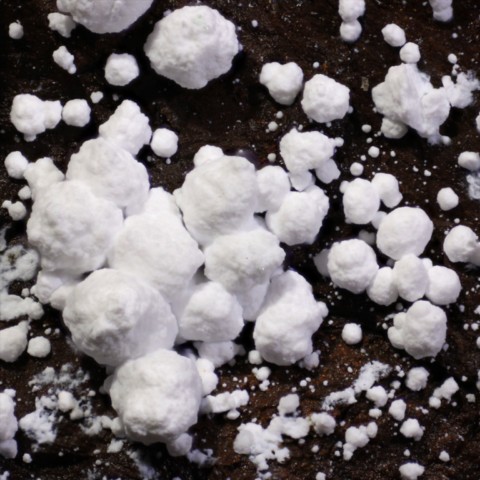HYDROMAGNESITE
Class : Carbonates, nitrates, borates
Subclass : Hydrated carbonates
Crystal system : Monoclinic
Chemistry : Mg5(CO3)4(OH)2 4H2O
Rarity : Quite common
Hydromagnesite is found in the same geological context as artinite, essentially in the fissures of serpentinized ultrabasic rocks, where this late-formed hydrothermal mineral lines the surface or occupies the fissures of these rocks. Its name comes from its chemical composition : from the Greek hudôr (water) and magnesite. The crystals are elongated blades with perfect cleavage, almost constantly twinned, which gives them a pseudo-orthorhombic appearance. More rarely, hydromagnesite occurs in acicular crystals, giving fibrous groups, or in massive to powdery aggregates. It is a transparent, colorless to white mineral.
Main photo : Hydromagnesite from Soghan, Arzuiyeh County, Kerman Province, Iran © Rob Lavinsky
Hydromagnesite in the World
Twinning
Twins are very common on {100} and can be polysynthetic.
Fakes and treatments
No fakes recorded for this mineral species.
Hardness : 3.5
Density : 2.24 to 2.25
Fracture : Undeterminated
Streak : White
TP : Translucent to transparent
RI : 1.523 to 1.545
Birefringence : 0.022
Optical character : Biaxial +
Pleochroism : None
Fluorescence : Blue
Solubility : Acids
Magnetism : NoneRadioactivity : None





